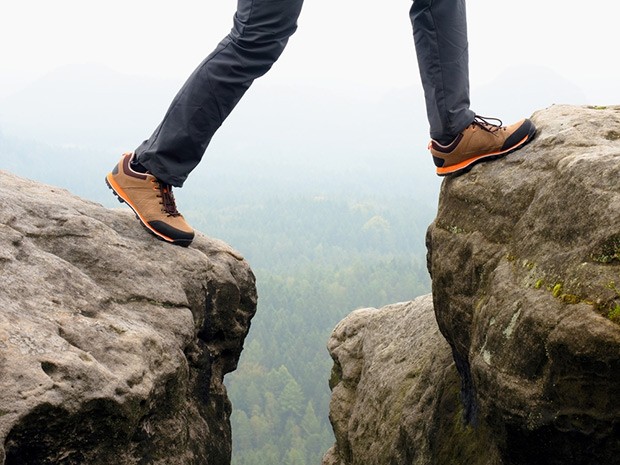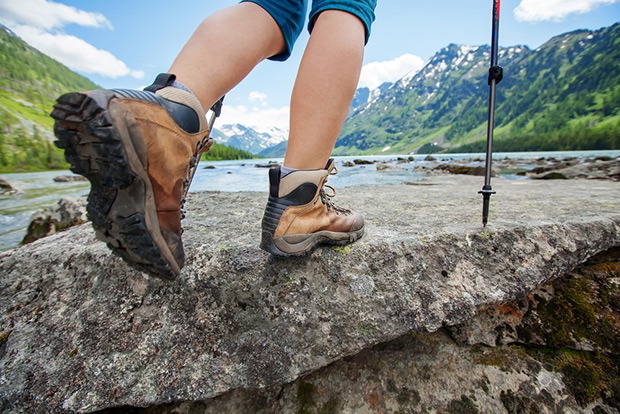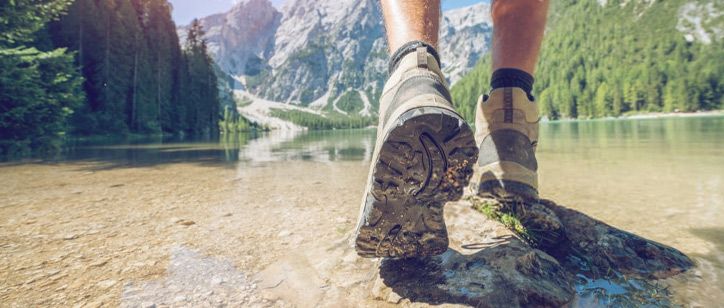TOP 10 Best Hiking Boots - How To Choose The Best Hiking Boots & Shoes
In a Hurry? The test winner after 17 hrs of research

Editor’s Pick: Timberland’s White Ledge Mid Waterproof Ankle Boot
Why is it better?
≫ Short break-in time
≫ Great fit
≫ Suits a wide variety of occasions/uses
≫ 1-year warranty
| Picture | Products | Rating/Shop | |
|---|---|---|---|
Image  | Products Editor’s Pick: Timberland’s White Ledge Mid Waterproof Ankle Boot | Rating 90 | |
| Durability 90% Waterproofing 93% Fit 87% Breathability 90% | |||
Image  | Products Alternative Pick: Columbia Newton Ridge Plus II | Rating 83 | |
| Durability 85% Waterproofing 75% Fit 80% Breathability 90% | |||
Image  | Products Best Budget Hiking Boots: Hi-Tec Bandera Mid Waterproof Hiking Boot | Rating 82 | |
| Durability 75% Waterproofing 77% Fit 85% Breathability 90% | |||
Image  | Products Upgrade Pick: Vasque Sundowner Gore-Tex Backpacking Boot | Rating 79 | |
| Durability 95% Waterproofing 70% Fit 70% Breathability 80% | |||
Image  | Products Best Hiking Boots For Men: XPETI Men’s Thermator Mid-Rise Waterproof Hiking Trekking Insulated Outdoor Boots | Rating 83 | |
| Durability 85% Waterproofing 90% Fit 80% Breathability 77% | |||
Image  | Products Best Hiking Boots For Women: Merrell Women's Siren Edge Hiker | Rating 80 | |
| Durability 75% Waterproofing 80% Fit 75% Breathability 90% | |||
Image  | Products Best Lightweight Hiking Boots: Altra Lone Peak 4 Trail Running Shoe | Rating 82 | |
| Durability 75% Waterproofing 80% Fit 90% Breathability 80% | |||
Image  | Products Best Desert Hiking Boots: FREE SOLDIER Outdoor Military Tactical Ankle Boots | Rating 85 | |
| Durability 80% Waterproofing 85% Fit 90% Breathability 85% | |||
Image  | Products Best Leather Hiking Boots: Forsake Patch - Women's Waterproof Premium Leather Hiking Boot | Rating 81 | |
| Durability 85% Waterproofing 80% Fit 75% Breathability 85% | |||
Image  | Products Best Waterproof Hiking Boots: KEEN Men's Targhee II Mid Waterproof Hiking Boot | Rating 82 | |
| Durability 75% Waterproofing 80% Fit 86% Breathability 85% | |||
1. Editor’s Pick: Timberland’s White Ledge Mid Waterproof Ankle Boot

Pros:
≫ Short break-in time
≫ Great fit
≫ Suits a wide variety of occasions/uses
≫ 1-year warranty
Cons:
≫ Minimal ankle support
≫ Not really breathable in summer nor insulated in winter
If you’re into minimalism or easily get stressed out because of excessive details and colors, like me, then this would be a perfect hiking boot for you. Still functional as hike-ready footwear, while at the same time, it offers the rugged, vintage aesthetic that would also go well with casual outfits.
There are three color options: black, dark brown, and wheat. My personal favorite has to be black because the others come with different colors for some components. Having a single, back-colored hiking boot might save you a lot of time as it’s compatible with any other color.
As the name suggests, the boots are completely waterproof thanks to their premium full-grain leather and seam-sealed construction, helping you keep your feet dry throughout the hike. Timberland’s shoes are often manufactured in Vietnam and China. I personally suggest you get the one made in Vietnam, as it will last longer than the counterparts made in Chinese factories. Be sure to check the tag or its origin before purchasing these boots.
▬▬▬▬▬▬▬▬▬▬▬▬▬▬▬▬▬▬▬▬▬▬▬▬▬▬▬▬▬▬▬▬▬▬▬▬▬▬▬▬▬▬
2. Alternative Pick: Columbia Newton Ridge Plus II

Pros:
≫ Lightweight and comfortable
≫ Little break-in time needed
≫ Affordable price
Cons:
≫ Not really waterproof
≫ Easily bent shoe lace tabs
Another pair of hiking boots that offers hike-ready support and is at the same time aesthetically satisfying is the Columbia Newton Ridge Plus II. Compared to the previous entry in the list, these boots give out more sporty vibes but are still suitable for work and casual dates. If your work is done mostly outside or involves walking on different terrains for long periods of time, this would be a perfect fit for you.
These boots are as light as a sneaker but are durable and can give you as much support and comfort as other hiking shoes. They might not be the number one candidate in the waterproof department, but they work best to maintain balance in wet or slippery environments. They come in a wider range of color choices, including black, cordovan, graphite, silver sage, etc.
▬▬▬▬▬▬▬▬▬▬▬▬▬▬▬▬▬▬▬▬▬▬▬▬▬▬▬▬▬▬▬▬▬▬▬▬▬▬▬▬▬▬
3. Best Budget Hiking Boots: Hi-Tec Bandera Mid Waterproof Hiking Boot

Pros:
≫ Low price (of course)
≫ Relatively comfortable
≫ Great resistance on slippery terrains
Cons:
≫ Low-quality laces and lace hooks
≫ Not really waterproof (rather water resistant)
In need of a functional hiking boot but running on a low budget? The HI-TEC Bandera Mid Waterproof Hiking boot may be a great fit for you. I personally had never heard of this brand before this, but it works surprisingly well considering the price they are offering. However, I would suggest not putting too high an expectation on it, even if they do come with some hiking features such as a breathable waterproof membrane that keeps your feet dry and steel shanks that provide extra support for walking on uneven terrains.
If trekking is only your weekend leisure activity, on not-so-rocky terrain and waterproofing aren’t big priorities for your hiking boots, then this could be worth your money. In terms of aesthetics, I’m not a huge fan of the design, but as long as it’s functional, it’s all that matters, right? I won’t suggest that you wear these guys on a date though (work is fine, I think).
▬▬▬▬▬▬▬▬▬▬▬▬▬▬▬▬▬▬▬▬▬▬▬▬▬▬▬▬▬▬▬▬▬▬▬▬▬▬▬▬▬▬
4. Upgrade Pick: Vasque Sundowner Gore-Tex Backpacking Boot

Pros:
≫ No need for break-in time
≫ Original Italian design
≫ Incredibly durable, even against extreme abuse
Cons:
≫ Narrow toe box (even for thin socks)
≫ Quality discrepancy between Chinese and Vietnamese versions (make sure to get the latter)
In need of functional hiking boots and have lots of money to spare? The Vasque Sundowner Gore-Tex Backpacking Boot would be a great fit for you. I mean, don’t they just look gorgeous? The price isn’t too outrageous, but I picked this one owing to its reputation for comfort and old-school style (I’m all for vintage, as you can tell).
As the name suggest, these boots features Gore-Tex lining which allows internal moisture to pass through while repelling external water, offering dryness and comfort for your feet. One thing to remember is to size up a little when picking up a pair of these guys, as Vasque might not be a fan of conventional hiking boot sizes, and these boots are not equipped with a “loosening up” feature.
▬▬▬▬▬▬▬▬▬▬▬▬▬▬▬▬▬▬▬▬▬▬▬▬▬▬▬▬▬▬▬▬▬▬▬▬▬▬▬▬▬▬
5. Best Hiking Boots For Men: XPETI Men’s Thermator Mid-Rise Waterproof Hiking Trekking Insulated Outdoor Boots

Pros:
≫ Provide great support
≫ Great fitting
≫Affordable price
Cons:
≫ Relatively long break-in time
≫ Heavy weight
≫ Stiff shaft
≫ Hard-to-dry interior
Planning on climbing the Alps with a group of friends as a year-end goal? Then consider this when deciding on purchasing a pair of hiking footwear. Some hike-specific features include rubber sole, Hydroshield Membrane waterproofing that keeps your feet dry and warm at the same time, rubber toe cap protection, and a rubber outsole for optimal grip when trekking through difficult terrains.
Since these are mountaineering boots, they would need to be broken in, so allow yourself plenty of training time before the trip. I would not say too much on the fashion aspect, though, since not many people would mind if your boots are not complimenting your outfits when climbing the Alps. There are three colors available, including black, light grey, and camouflage.
▬▬▬▬▬▬▬▬▬▬▬▬▬▬▬▬▬▬▬▬▬▬▬▬▬▬▬▬▬▬▬▬▬▬▬▬▬▬▬▬▬▬
6. Best Hiking Boots For Women: Merrell Women's Siren Edge Hiker

Pros:
≫ Great tread
≫ Goes well with outfits in different occasions
≫ Surprisingly comfortable (no blister pain)
Cons:
≫ Not really waterproof
≫ Small toe box
≫ Comes undone easily
I purchased a pair of these while planning a 6-day trip to Europe, and they worked wonders! It was the first pair from Merrell that I got, but it exceeded my expectation. I always have problems with shoe sizing, but these fit right out of the box, so thumbs up for Merrell.
There was not too much hiking involved during the trip, but I did use them as trail running shoes for one occasion, and they gave me the exact amount of support and comfort I needed. I like this pair more than other hiking shoes, as it’s less bulky and outdoorsy, and I use it for daily activities when extra support is needed. They have multiple colors to choose from, but my favorite is Faience (picture).
▬▬▬▬▬▬▬▬▬▬▬▬▬▬▬▬▬▬▬▬▬▬▬▬▬▬▬▬▬▬▬▬▬▬▬▬▬▬▬▬▬▬
7. Best Lightweight Hiking Boots: Altra Lone Peak 4 Trail Running Shoe

Pros:
≫ Well padded, supportive footbed
≫ Grippy sole (including in the wet)
≫ Lightweight
≫ Great for warm weather
≫ Roomy toe box
Cons:
≫ Might wear out quickly
≫ A bit pricey
The Altra Lone Peak 4 is currently the lightest option in the hiking shoe department. The whole pair only comes up to 1 lb. 3 oz., which would free you from a lot of fraction while trekking. There are several updated features that are noteworthy, such as static webbing for better cinching ability, a flexible strap for a roomier forefoot, and a sandpaper-textured toe cap. Not many sizing problems spotted, so you can rest assured while shopping for this online. Color options include gray/yellow, blue, green, black/red, and gray/orange (pictured).
▬▬▬▬▬▬▬▬▬▬▬▬▬▬▬▬▬▬▬▬▬▬▬▬▬▬▬▬▬▬▬▬▬▬▬▬▬▬▬▬▬▬
8. Best Desert Hiking Boots: FREE SOLDIER Outdoor Military Tactical Ankle Boots

Pros:
≫ Affordable price
≫ Great aesthetics
≫Complicated lace system
Cons:
≫ Run a full size too small
≫ Need time to be broken in
These may come across as bulky and heavy at first, but if you’re thinking of trekking the Arizona desert, this might be the right call for you. However, they make take up to four weeks to be broken in, providing you wear them weekly. If you are like me and get frustrated easily with shoe laces, then you would like Free Soldier’s speed lace fastening system in this one.
Some other hike-ready features include a rubber outsole that offers slip, oil, and abrasion resistance and a cushioned removable insole with anti-microfiber that keep your feet dry throughout trekking. These come in three color options: black, coyote brown, and soil.
▬▬▬▬▬▬▬▬▬▬▬▬▬▬▬▬▬▬▬▬▬▬▬▬▬▬▬▬▬▬▬▬▬▬▬▬▬▬▬▬▬▬
9. Best Leather Hiking Boots: Forsake Patch - Women's Waterproof Premium Leather Hiking Boot

Pros:
≫ Goes well with outfits in a variety of occasions
≫ All terrains approved
≫Easy care
Cons:
≫ Small sizing
≫ Small toe box
Yes! We are back to leather again! Although the design of these boots is not impeccable (too busy for my liking), I do like how it can work well in different circumstances, including trekking on rocky terrain, thick mud, rivers, snow, work, and gardening. I purchased a pair of these 4 months ago, and they are still in good condition. They are pretty comfortable and breathable for leather boots and keep my feet warm and dry – just as I like it.
One thumb down for this one would be the sizing. I would suggest half-size down when choosing these unless you don’t mind walking with extra space in your boots. There are five colors to choose from, including black, brown, grey, sand, and timberwoft.
▬▬▬▬▬▬▬▬▬▬▬▬▬▬▬▬▬▬▬▬▬▬▬▬▬▬▬▬▬▬▬▬▬▬▬▬▬▬▬▬▬▬
10.Best Waterproof Hiking Boots: KEEN Men's Targhee II Mid Waterproof Hiking Boot

Pros:
≫ Great KEEN customer service
≫ Little break-in time
Cons:
≫ Comes undone quite easily
≫ Heavy weight
If your chosen hiking terrains entail crossing wet areas or rainy weather conditions, consider these as one of the best options for you. Although its water resistance feature is a bit better than other hiking boots out there, don’t worry, they are still breathable thanks to the leather lining make-up, curbing bad foot odor after a long trail. It might be a bit pricey for a pair of hiking boots, but you would get the best waterproof function if you’re going with these. Color options include black, raven, shitake, tan, and slate.
▬▬▬▬▬▬▬▬▬▬▬▬▬▬▬▬▬▬▬▬▬▬▬▬▬▬▬▬▬▬▬▬▬▬▬▬▬▬▬▬▬▬
Before deciding which boots are right for you, it is important to know “right for what?” Making plans to climb Everest would definitely entail boots that are different from the ones you would use for weekend trail hiking. Based on their intended purpose, hiking boots can be classified into 4 categories.
ULTIMATE GUIDE FOR CHOOSING THE RIGHT TYPE OF HIKING BOOTS
1. Hiking shoes
Think of this as a hybrid of a running shoe and boot. While the structure remains relatively similar to normal running footwear, hiking shoes offer more protection and support thanks to extra padding and thicker soles. This is lowest class of hiking shoe, so they are usually reserved for gentle terrain or smooth, well-kept trails or long distance trail running with ultra-light loads.
However, there are still plenty of occasions when these guys can come in handy. Hiking shoes are often light and resistant and provide good support, which makes them suitable for easy hikes during summer or used as “approach shoes” during mountaineering and expeditions.
Also, as trail running is gaining popularity, more and more people opt for hiking shoes for extra support and comfort instead of normal running footwear. By the same token, these can also be used for daily-life purposes and travelling, even if you’re not a hiking-enthusiast.

2. Mid-weight boots/ day hiking boots
As the name might suggest, mid-weight boots have a higher cut than hiking shoes; they reach over the ankle. The construction allows them to give better protection, making it less flexible, but not completely stiff. Despite having a less flexible make-up than the former, these boots can be used in almost any kind of hikes, especially those in which ankle protection is critical. Mid-weight boots are often intended for fairly rocky terrain and off-trail adventure in high-rising mountains with light loads.
3. Off-trail heavy boots/ backpacking boots
These boots are designed to provide maximum support and shock absorption, and they are suitable for the most difficult trekking with rough terrains with heavy loads. Compared to the two types mentioned above, backpacking boots have sturdier construction that requires break-in before doing the actual hiking. Some of their unique features are toe caps, rugged soles, and multi-purpose materials in some variances.
Off-trail heavy boots can help you get through the most challenging trekking, but precaution needs to be taken when shopping for a pair of these. Online shopping surely is more fun and less time-consuming, but make sure you pay a physical store a visit to try on one of these boots before purchasing. Make sure you get the right size, and don’t worry too much about the initial soreness because they need to be worn for some time before fitting comfortably and preventing ankle injury.

4. Mountaineering boots
Or “hardcore” hiking boots, as I like to call them. These boots are specially designed to cope with high mountain hikes in extreme conditions. Therefore, they have the most rigid structure and are often used in combination with crampons with a special attachment point at the top of the sole.
Despite not being the most comfortable option for long hikes, mountaineering boots give their owner the highest protection and warmth for ice climbing and mountain expeditions in the winter or low temperature environments. You definitely don’t want to take these guys for a mid-summer mountain hike (unless you’re up for a foot sauna).
Similar to backpacking boots, mountaineering boots also need some “getting to know each other” time before you can feel comfortable walking in these. If hitting the top of the Alps or Everest is on your bucket list, then these would be something you would need in order to tick that box.
FREQUENTLY ASKED QUESTIONS
- 01. How to better fit my hiking boots?
-
To ensure a proper fitting on your hiking boots, it’s important for hikers to test and walk a few rounds with your boots before buying. But if you wish to improve the fit after you’ve purchased the products, then we do have a few tips for better fit your hiking boots, should they feel too tight or loose.
First of all, you can easily change the knot strategy on your shoes to adjust their fit for varied purposes. As a result, we have the window lacing which creates a gap between the top of your foot and alleviates the pressure on the area. For better securing your heels, you can also apply the surgeon knot to better tying these areas. And lastly, if your shoes have narrow fronts, you can skip the last two knots to avoid putting too much strain on the toes.
Also, you can easily put on a pair of socks if the shoes are generally bigger than your feet. Or consider using the aftermarket insoles, which are sold separately, with multiple product lineups, each having its own features of comfort and functionality.
- 02. Can I replace my hiking boots with a pair of hiking sneakers ?
-
There have been some debates regarding this topic, and from our experts’ perspective, it’s always possible to have both of these in your shoe cabinet, just to better suit the types of hiking that you’re planning on.
For that reason, if flexibility and versatility are what you want, then the hiking sneakers will be suitable for a wide range of different activities. From family hiking to trailing, walking, and even biking, you’ll find the footwear extremely handy for their lightweight designs and freedom of movements.
On the other hand, you can’t expect your hiking sneakers to protect your feet from the rough terrains and unsupportive weather conditions. These are where your hiking boots shine. With a sturdy design, rugged build, and extra protection, your feet can stay comfortable even after a long hike. And the functional bottom sole will also offer impressive stability and protection when walking on rough or slippery terrains.
Plus, you can’t expect yourself to always put on your shorts and the pair of sneakers to hike on every weather. During the snowy and wet conditions, having your hiking pants and boots ready should be your first preparations.
- 03. Are there any major differences between men and women boots?
-
No significant difference apart from the size. The size and volume of women’s feet are normally smaller than that of men. However, not many companies add different sizing, although it’s best that they do because again, the best hiking boots are the ones that fit the best.
- 04. Are all hiking boots waterproof?
-
Not necessarily. It depends on the materials it’s made out of; for instance, leather is 100% waterproof out of the box.
- 05. What kind of socks should I choose when wearing hiking boots?
-
Anything but 100% cotton. Hiking boots have a more rigid structure than normal shoes which hinders moisture from escaping. You should go for a mix of materials, such as a polyester blend. Don’t buy socks that are bunched or too tight.
- 06. How can I tell if a hiking boot is high quality?
-
The fit. The best hiking boot is the one that fits you best. They need to provide enough support for your feet, plenty of room in the toe box, and have a sturdy foundation.







